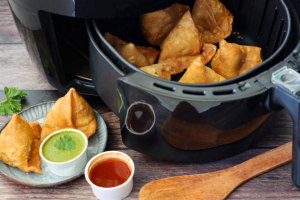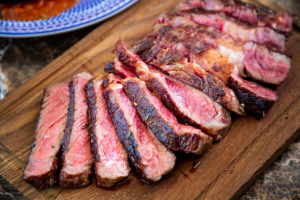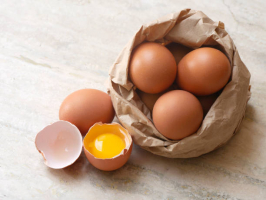Top 15 Biggest Mistakes Everyone Makes With Lasagna
Lasagna is a unique type of comfort meal. Although there are several variations of lasagna, from traditional Bolognese to healthy variants made with kale, ... read more...there is no one best method. However, everyone has fallen victim to several typical errors. If you've never made lasagna before, you've probably already tried some of these; it's all part of the learning process. Here are the most common mistakes people make when making lasagna.
-
Since it's simple to overcook lasagna noodles, this is arguably the most frequent error made when assembling a traditional Italian meal. While you don't want soggy noodles, you also don't want them to be undercooked. Lasagne is more challenging to assess for doneness than other types of pasta, which may be tasted for texture and color. Noodles for lasagna should be slightly undercooked (al dente). Al dente, which translates to "to the teeth" in Italian, refers to pasta that still has some texture.
You want the lasagna noodles to be a few minutes shy of al dente so they may complete cooking in the pan because they will spend an additional 45 minutes in the oven drenched in layers of sauce. Use no-boil noodles if trying noodles seem intimidating. Noodles that don't require boiling can help you avoid this problem since you can just pile them into the casserole dish and they will cook alongside the lasagna. There is controversy around the use of no-boil noodles since some people believe they are dishonest because the cooked noodles aren't as solid (via HuffPost). However, they can save you time and help you avoid this typical error as you work on perfecting the other components of lasagna.

Overcooking the noodles 
Overcooking the noodles -
Salting the water is the first step in preparing any pasta meal. Pasta gains taste when boiled in salt water. Salt should be added to pasta, according to Barilla, after the water has reached a boil but before adding the pasta. While everyone agrees that salting water is important for all pasta, there is some disagreement on whether or not to add oil. Many people concur that it is a fallacy that adding oil to pasta water would prevent it from sticking together. The oil, on the other hand, coats the pasta and prevents the delicious sauce from adhering to it.
Noodles for lasagna, on the other hand, don't adhere to the same restrictions as regular spaghetti. The lasagna noodles are the only pasta, according to Lidia's Italy, that should be cooked with a little oil since they tend to cling together and are challenging to separate into layers. Therefore, add some olive oil to the water while boiling the lasagna noodles; it will make them much simpler to handle. The noodles should be cooked, strained, and then spread out flatly on parchment paper after a quick washing in cold water. When it's time to layer the lasagna, they will be available for use.

Boiling noodles without oil and salt 
Boiling noodles without oil and salt -
It takes hours in the kitchen to prepare lasagna, and when the time comes to eat it, a huge spoon is required since the lasagna is so soupy. It's a typical beginner error, and a number of things might cause it to happen. You can stay clear of this watery mess in the future by being mindful of the offenders. Simply said, using too much sauce is the main cause of soupy lasagna. This is an example of when something is too much of a good thing. Use just enough sauce to coat each layer of cooked lasagna without going overboard so that it doesn't drown in the sauce.
Another cause of watery lasagna is moist ingredients. If you're using ricotta, squeeze out any extra moisture using cheesecloth. Similarly, while preparing meat lasagna, be sure to drain off any extra oil that might spoil a tasty dish. Last but not least, beware of vegetables high in moisture, such as zucchini and mushrooms, which might overwater your meal. Before putting veggies in lasagna, DeLallo advises cooking them first.
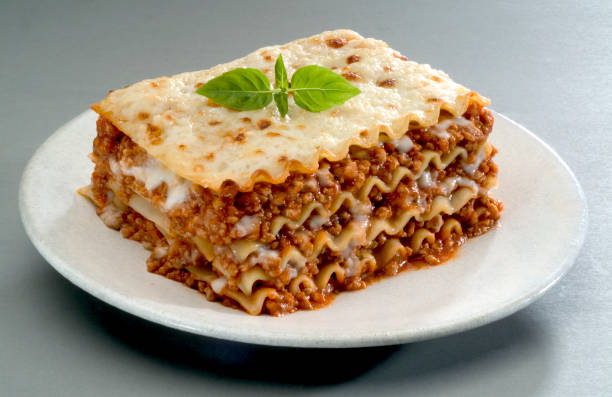
Letting your lasagna get too soupy 
Letting your lasagna get too soupy -
Lasagne can be made in several ways. Although there is no set method even in Italy, most people would agree that a traditional lasagna is created with a thick, meaty ragù. However, in today's health-conscious society, many home cooks are searching for techniques to make traditionally heavy dishes like lasagna lighter. It's alluring to occasionally alter recipes by using lean ground beef, turkey, or chicken for the traditional lasagna ragù, but this is erroneous. Even though you may be attempting to reduce the amount of fat in your diet, a great ragù needs the fat.
The New York Times claims that to maintain the desired flavor and texture, a good ragù needs to contain both beef and pork. The red sauce needs the richness that pork provides because beef does not have enough fat to flavor it on its own. Use a mixture of ground beef and pork for your meaty ragù and reserve the lean meats for other dishes.

Using the wrong protein 
Using the wrong protein -
With lasagna, "more is better" is not a good strategy. Yes, a good lasagna includes layers, but using an overloaded pan and adding too many layers can result in disaster. The number of layers of lasagna is usually three or four, and the proportions of the filling, sauce, and noodles are always the same. Lasagne soup is the result of too much sauce. Too many noodles ruin the texture, and too much filling overwhelms the palate with flavor. A good lasagna must have a balance of flavors and textures so that each bite contains all of the components without any one of them taking center stage.
It's easy to maintain balance in lasagna by adhering to the maxim "less is more" and avoiding overstuffed layers. Even though some restaurants claim to have 15 layers of lasagna, they use fresh, paper-thin noodles that keep the dish balanced despite the number of layers. The majority of home cooks use thicker store-bought noodles, and stuffing a lasagna too full will make it taste terrible.

Overloading the layers 
Overloading the layers -
A popular soft mild cheese in Italian cooking is ricotta. It's used to layer lasagna, top pizza, stuff calzones, and fill pasta shells. Its mild flavor gives a meaty red sauce the ideal amount of creaminess. While there are some ways to replace ricotta with other soft cheeses, you shouldn't replace ricotta in lasagna with cottage cheese.
Even while it has a similar soft, mild flavor to ricotta, cottage cheese lacks the latter's creamy texture and mouthfeel and contains less fat overall, according to The Dairy Dish. Furthermore, the low-fat white cheese lacks the structural strength to function as a lasagna layer. Your lasagna will crumble because it is mushy. There really isn't a need to use another cheese in lasagna since ricotta is so easily made at home and is widely available. If you're looking for a dairy-free substitute, silken tofu will provide you with creaminess.

Substituting cottage cheese for ricotta 
Substituting cottage cheese for ricotta -
It takes time to prepare a lasagna dish—from heating the noodles to browning the filling to putting it all together. It makes sense that home cooks would seek to find quick fixes, such as utilizing pre-grated cheese in a box. From a time-management perspective, this can seem like a nice idea, but it's not a fantastic choice.
Pre shredded cheese has a number of unfavorable additives, such as anti-clumping chemicals like potato starch (via Science Direct). These chemicals make the pre shredded cheese more difficult to melt while also preventing it from sticking together. That's not all, either. According to NPR, fillers like wood pulp are frequently added to shredded cheese. Roll up your sleeves and grate your own cheese unless you want a coating of wood pulp and preservatives in your lasagna.

Using preshredded cheese 
Using preshredded cheese -
All the ingredients (apart from the cheese) should be cooked before assembling and baking lasagna, whether it is made with meat or vegetables. In essence, you're just melting the cheese and baking the flavors together. Ground beef, hog, and ground poultry must all be precooked to 165 degrees Fahrenheit (via FDA). A foodborne sickness could result from forgetting to do this or missing it. Although it's uncommon, eating raw veggies might make you ill (via Eat This, Not That).
The major purpose of preheating vegetable fillings, however, is to combine the aromatics and dry out the veggies to reduce excessive, unwelcome moisture in the lasagna. If you want the veggies in your summer lasagna to retain some of their crunches, blanch them rather than sautéing them in oil. Vegetables can also be roasted, but to guarantee equal cooking, make sure they are all around the same size.

Not precooking filling 
Not precooking filling -
It's time to assemble your lasagna once the noodles, sauce, and filling are prepared, and yes, there is a proper method to assemble the lasagna. You should first coat the bottom of the pan with a little olive oil and sauce (via Today). Oil and sauce prevent the bottom of the lasagna from browning and adhering to the baking dish during the roughly 45 minutes it will spend in the oven.
Add your first layer of noodles once you've completed the foundation layer. Add another layer of noodles and your filling after covering the noodles with some sauce and cheese. Without drowning it, add a dash of sauce to each layer. When serving, you can always add more sauce, but you can never take away too much. Make additional sauce if you are worried that the lasagna will be too dry or if you want more for dipping. Your future self, who will enjoy lasagna, will appreciate you doing this especially when you serve leftover lasagna.

Not layering properly 
Not layering properly -
Ricotta cheese is a versatile culinary staple because of its mild flavor, which works well in both savory and sweet recipes. While it is tasty on its own, seasoning it before putting it in the lasagna makes it even better. You probably already have all the items in your home, and seasoning ricotta is a straightforward process. Add two eggs, yolks, and all, along with Italian herbs like basil, oregano, and parsley.
When cooked, the ricotta has greater consistency thanks to the eggs and the herbs (via The Whole Portion). The addition of eggs is a simple technique to hold the layers in place and give your stacked noodles another level of flavor because soft ricotta cheese can occasionally result in a mushy, watery lasagna. Additionally, the eggs give the ricotta some much-needed saltiness. Seasoning the ricotta filling will elevate the meal, whether you're cooking ravioli or lasagna.

Using unseasoned ricotta 
Using unseasoned ricotta -
It certainly does when it comes to lasagna pans. The proper pan must be used to bake layers of lasagna noodles that are covered with sauce and dripping with stuffing. The dish should be deep enough to accommodate at least three layers of lasagna and big enough to accommodate the length of the noodles.
Although the traditional 9-by-13-inch glass baking dish is still widely used in kitchens, if you frequently prepare lasagna or have a large family, it may be time to change to a wider and deeper dish. After all, you don't want to prepare your sauce, noodles, and stuffing for hours just to find that there isn't enough space for everything. A lasagna pan that is overstuffed can cause the sauce to boil over the edges and clog your oven. Consider considerations other than size when selecting a baking dish for lasagnas, such as the material, weight, and cold resistance (via L.A.Times). Using the proper equipment in the kitchen is always crucial, and a decent lasagna dish is a wise investment.

Not using a big enough pan 
Not using a big enough pan -
A charred top and dry lasagna are the effects of baking this meal uncovered. Beginner lasagna cooks frequently make the error of skipping the foil wrapping and don't realize it until it's too late. Since most of the lasagna's components have already been cooked, it's straightforward to ignore, but not quite. When lasagna is covered, the center is completely heated without the top layer burning. The majority of lasagnas spend close to 45 minutes in the oven, thus covering it maintains the heat within, allowing the flavors to melt together and maintaining an even temperature throughout.
The lasagna is best covered with aluminum foil, which should be wrapped loosely enough to prevent the top layer from touching the foil. Keep the cover loose to preserve that top layer since you don't want the cheese to adhere to the foil when you take it out of the oven after all your hard work assembling it.

Baking lasagna uncovered 
Baking lasagna uncovered -
Béchamel sauce, which is regarded as one of the five mother sauces in French cuisine, was really created in Italy (via Los Angeles Times). It is a basic white sauce that many French recipes frequently start with and is created with butter, flour, milk, nutmeg, and salt. For Italians, béchamel sauce is the vital dairy component that gives lasagna its authentic flavor. The Washington Post claims that traditional Italian lasagna was never served as the main course and is cooked using béchamel rather than ricotta.
In the past, it was served as a side dish with fine noodles and a thin, light béchamel sauce. After arriving in the United States, lasagna underwent Americanization and gained popularity as a major dish that developed into a larger supper with robust components. Home cooks who want to perfect lasagna should prepare a real lasagna with béchamel. You may better comprehend the intricacy of lasagna and how culture affects cuisine by tasting the original meal.

Leaving out the béchamel sauce 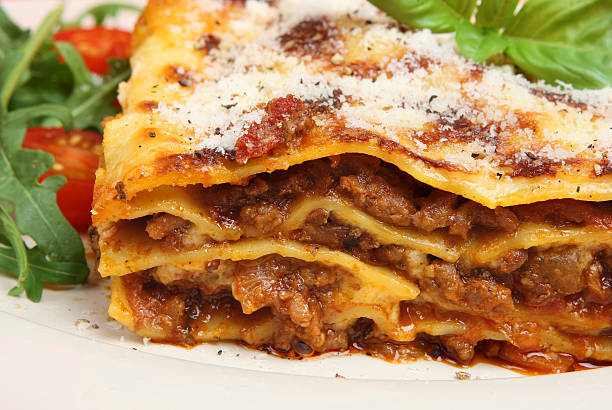
Leaving out the béchamel sauce -
Everybody, including lasagna, occasionally has to take a break. A baked lasagna's gooey ingredients have been boiling away in the oven, so when they are removed, they are not quite ready to be sliced. You'll have a hot mess on your hands if you attempt to cut lasagna right away.
Why take the effort to meticulously prepare the ingredients and neatly arrange your noodles if all you get on your dish is lasagna soup? Sit back and unwind until the ingredients firm up after you remove the lasagna from the oven for a nicely layered dish. DeLallo advises giving your newly prepared lasagna 20 to 40 minutes to rest. Further recommending letting the lasagna rest for two to three hours before cutting and rewarming each piece, Lidia's Italy.

Forgetting to let the lasagna rest 
Forgetting to let the lasagna rest -
The last error with lasagna that many do is not testing new recipes. Of course, you want to polish your go-to recipe, but you should also experiment with this traditional Italian meal. Cooking ought to be enjoyable and courageous. Cooking requires creativity, which is why many people regard it as an art form.
Try spaghetti squash lasagna boats or Buffalo chicken lasagna to step outside of your comfort zone. With the components your family like, you may also make your own lasagna. Go wild, think outside the box, and use seasonal ingredients from your garden or neighborhood farmers market to create dishes like kale lasagna. Alternately, make a layered cookie lasagna to transform it from a heavy main meal into a sumptuous dessert. Learn the fundamentals, then make every type of lasagna you can find because everyone loves it.

Sticking to the classic recipe 
Sticking to the classic recipe

















